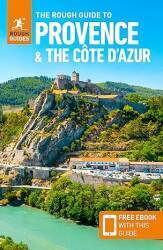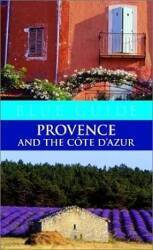
Châteauneuf-du-Pape
Châteauneuf-du-Pape
Châteauneuf-du-Pape is a village about 12 kilometers north of Avignon and 3 kilometers east of the Rhône. We're visiting Avignon, and we've taken a trip to this area where the Popes had an alternative residence. It's Châteauneuf-du-Pape, or the Pope's New Castle. Now it's famous for wine named for the Papal vacation home.
The monks of the abbey of Saint-Théodore in Avignon built a simple Romanesque style chapel here in the late 900s or early 1000s. There was a small village here in 1094.
The location became prominent when the Avignon Popes began using it as a place to get away from their Palace. Châteauneuf-du-Pape, "The Pope's New Castle".
As you ride south on the TGV along the Rhône on your way to Avignon, you see vineyards on both banks, the Côtes du Rhône.
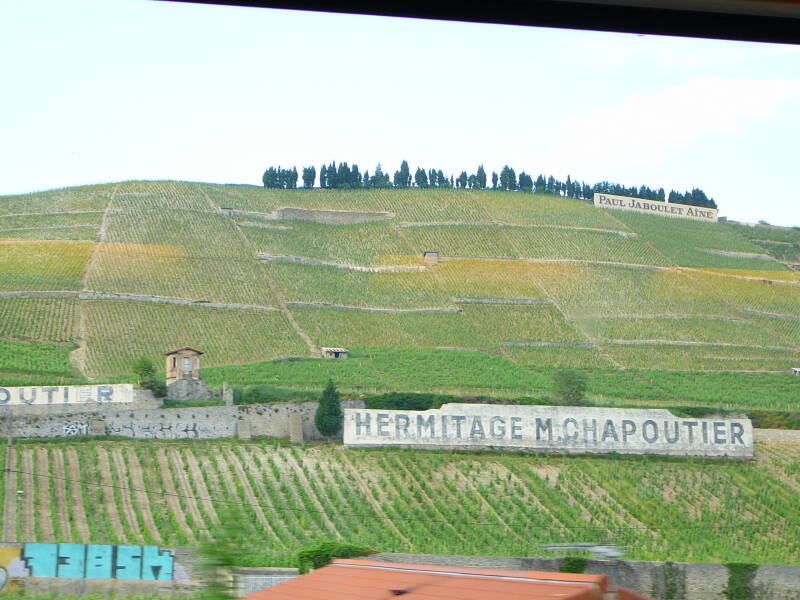
The area lies within the Côtes du Rhône AOC. An AOC or Appellation d'origine contrôlée, is "protected designation of origin". It's a geographical designation for agricultural products — wine, cheese, and so on. The concept goes back to when Roquefort was regulated by the French parliament in 1411. You can only call a cheese Roquefort if it was produced from milk from the Lacaune breed of sheep, and then aged in certain natural caves at Roquefort-sur-Soulzon.
For wine, the concept started with wine produced along the west bank of the Rhône. In 1737 the King of France ordered that casks of wine shipped from the river port of Roquemaure should be branded CDR, meaning Côte du Rhône. The Appellation became legally defined in 1937. They added the "s", including both banks.
Today's AOC rules for wine regulate the specific varieties of grapes, where they were grown (down to which field, or even which part of which field), and how they're aged. Once in the bottle, AOC rules even control the size of the print on parts of the label.
The Côtes du Rhône AOC covers some 40,000 hectares (or 400 square kilometers). It contains the Château-Grillet AOC, one of the smallest AOCs, covering less than 4 hectares.
Amazon
ASIN: 2843542499
Pope Clement V visited Châteauneuf-du-Pape on several occasions, often staying for a week or more. The next Pope, John XXII, stopped here for 10 days after his coronation in Lyons, on his way to Avignon.
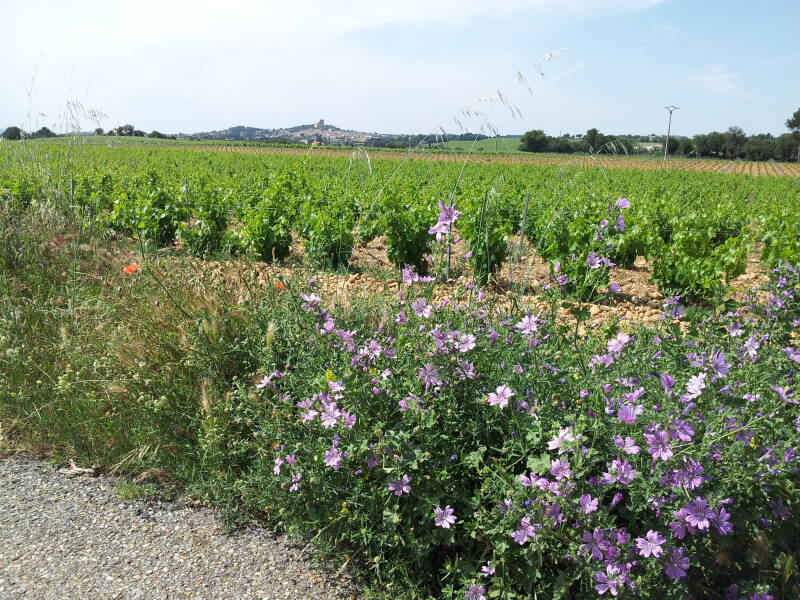
In 1317, a year after his election to the Papal throne, Pope John XXII ordered that a castle be built on the small hill above the village. It was finished in 1322. That's it in the distance above. It was fortified, but also built as a comfortable summer home. It's a Châteauneuf-du-Pape, a Pope's New Castle.
The Germans used that castle as an observation post during World War II. When they were pulling out in August 1944, they tried to destroy it. They only managed to blow up the north half.
Wine would have been made here long before the Popes arrived. The Greeks brought the concept of winemaking to southern France. Before that, the locals made mead.
The local vineyards use galet roulés, rounded rocks covering soil with a higher clay content. The rocks absorb heat from the sun all day, and release it through the night. This makes the grapes ripen faster. The stones also moderate changes in ground moisture.
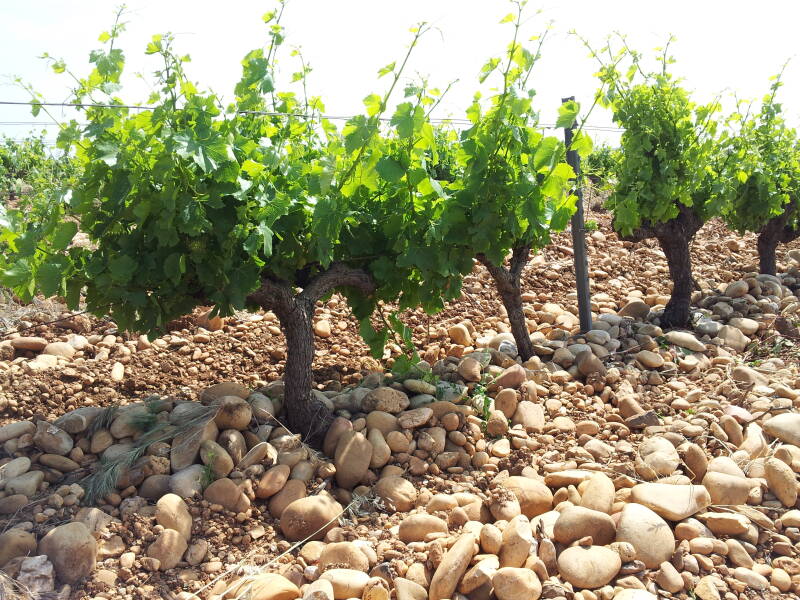
Côtes du Rhône is an AOC for the Rhône wine region. It includes an area of about 83,000 hectares from Avignon about 200 km north to Vienne.
It includes white, rosé, and red wines, with a minimum alcohol content of 11%. 5,202 growers, 875 private producers, 70 co-operative wineries, and 20 producers and blenders produce about 419 million bottles per year.
Côtes du Rhône–Villages AOC is the next step up. This includes 95 authorized communes with a total of about 3,000 hectares of vines. It has stricter requirements on grape content, and a minimum 12% alcohol content.
Côtes du Rhône Villages (named village) AOC is the third level. Just 18 of the villages or communes are allowed to include their village name on the label, as opposed to just "Villages" like the previous level. About 6,500 hectares of vines go to this appellation.
Côtes du Rhône Crus AOC forms the top level of AOC in the region. Just 17 crus can list their village name without including Côtes du Rhône on the label. One of these is Châteauneuf-du-Pape AOC.
A cru is "a vineyard or group of vineyards, especially one of recognized quality". It is connected to, or a form of, the concept of terroir. A cru is a specific terroir of good quality, the vineyard itself or the wine it produces. Terms like premier cru and grand cru denote degrees of quality, although the ordering varies depends on whether you're talking about Bordeaux wine, Burgundy wine, or other regions.
Amazon
ASIN: 9081201743
Amazon
ASIN: B07DMNX8TF
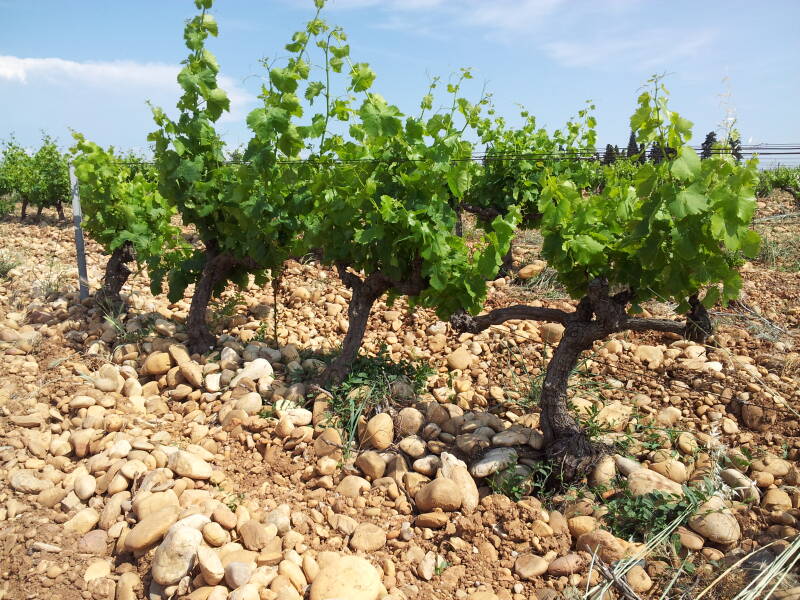
Châteauneuf-du-Pape AOC is one of the most respected appellations in the Rhône wine region. It includes a little over 3,200 hectares of vines around the village of Châteauneuf-du-Pape and the three neighboring villages of Bédarrides, Courthézon and Sorgues. They produce almost 14.7 million bottles per year.
Before World War I, most Châteauneuf-du-Pape wine was sold to Burgundy wineries as vin de médecine, higher-alcohol "booster" for the local product. The quality, or at least the public perception of quality, greatly increased through the 20th century.
Early AOC requirements included minimum alcohol content, and limits on soil moisture. The soil had to be arid enough to support both lavender and thyme. The powerful mistral wind blowing down out of the mountains toward the coast further decrease soil moisture.
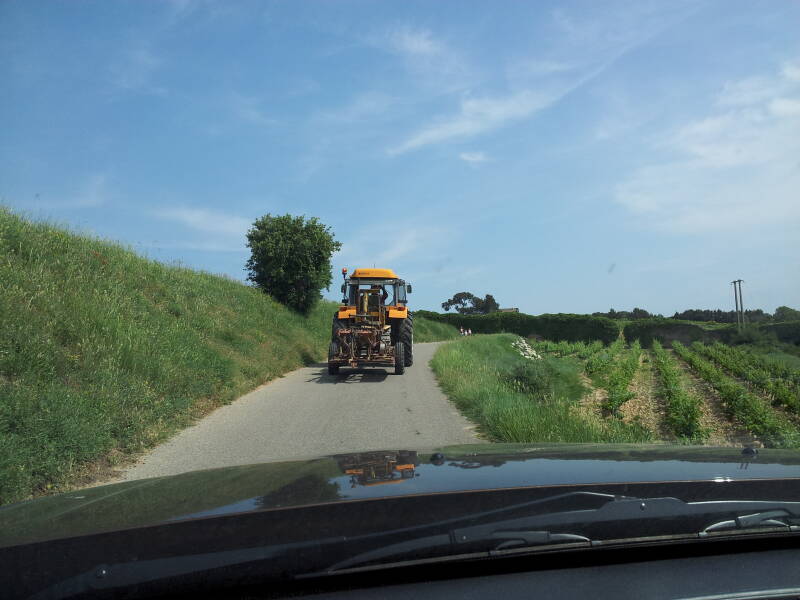
Châteauneuf-du-Pape AOC wines can be red or white, but not rosé. Most is red, only one in every 16 bottles is white. Eighteen grape varieties can be used. Most wines are blends dominated by the Grenache variety — Grenache noir, Grenache blanche, and Grenache rosé. The Grenache noir grape covers 72% of the total vineyard surface. AOC rules limit the yield to 3442 liters per hectare.
The wines must have a minimum of 12.5% alcohol with no chaptalization allowed (adding sugar to boost fermentation yield). Most are in the range of 13-15% ABV. The local winemakers work to balance the high natural sugar levels in the grapes with the tannins and phenols.
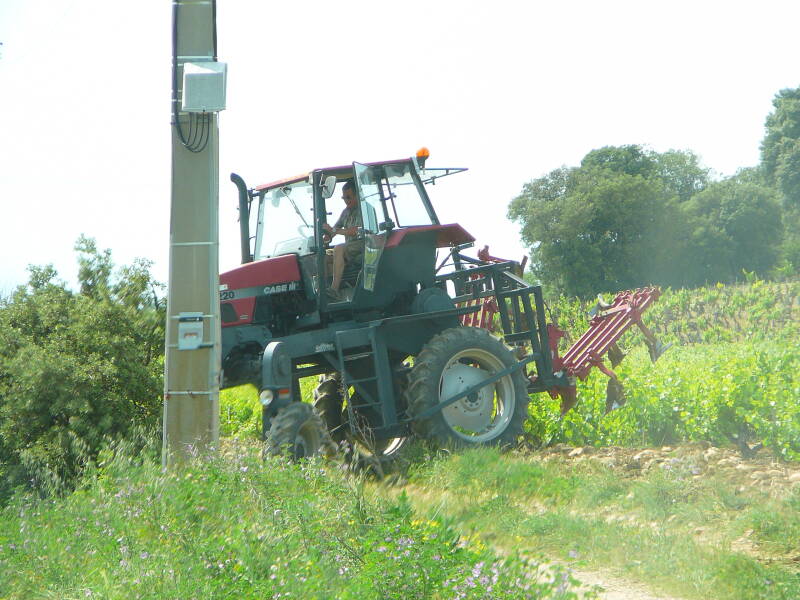
The bottles tend to be heavy and dark, and have traditionally had Papal insignias on the labels. The Papal regalia has become less popular, but the bottles remain heavy.
Continue visiting Avignon:
Or, somewhere else in France:
